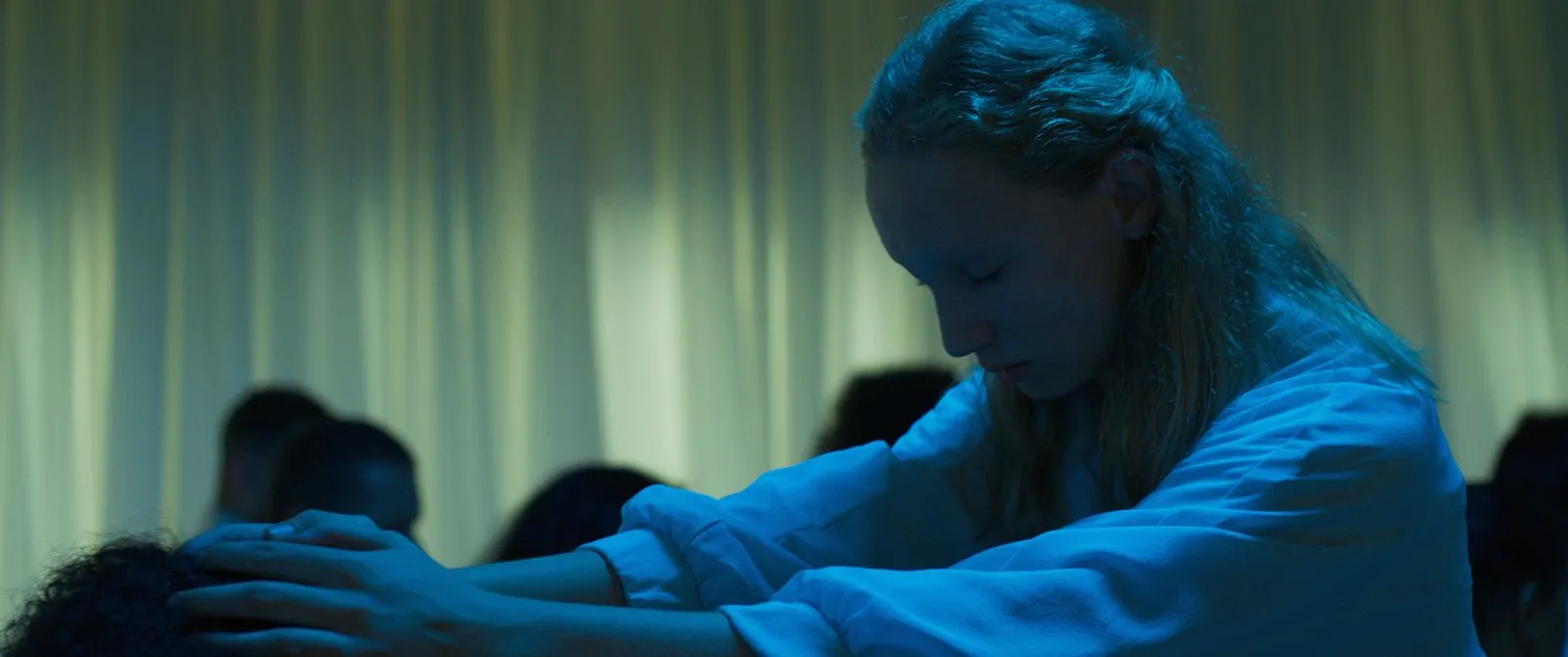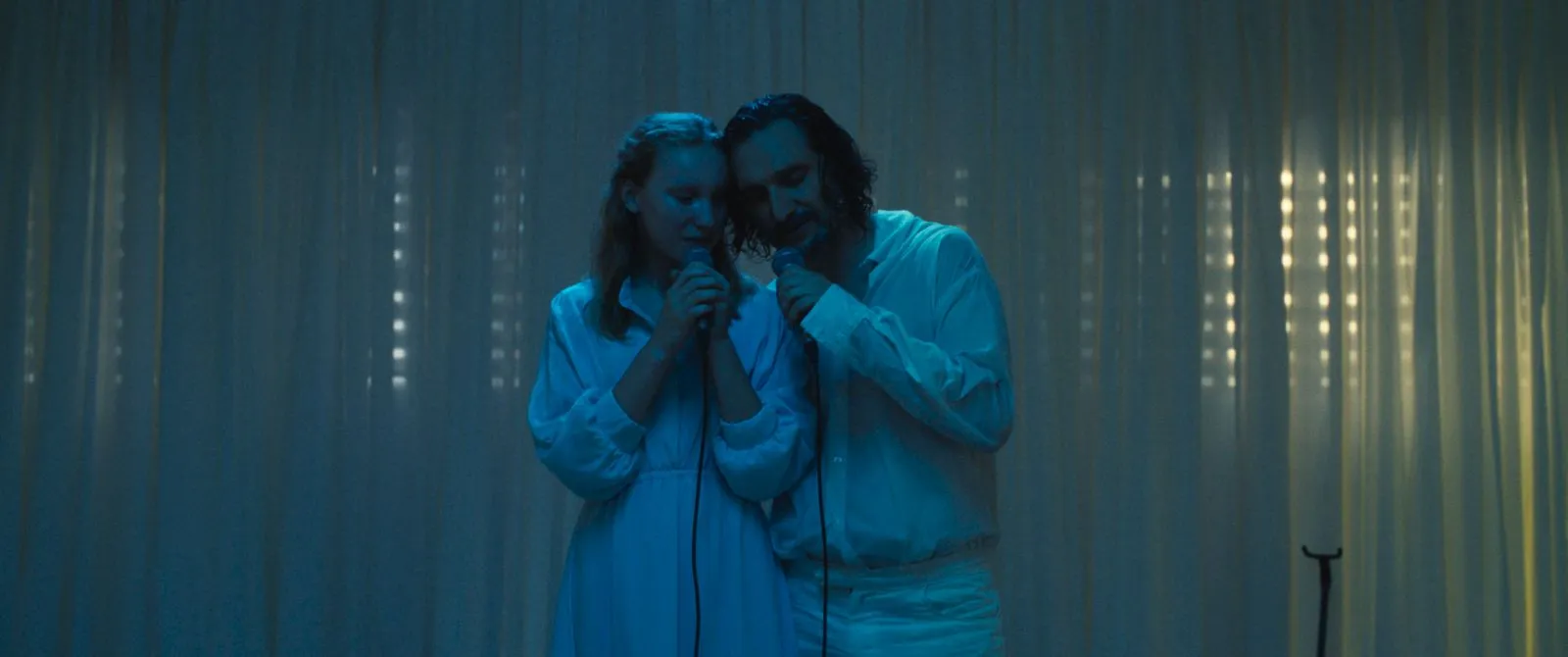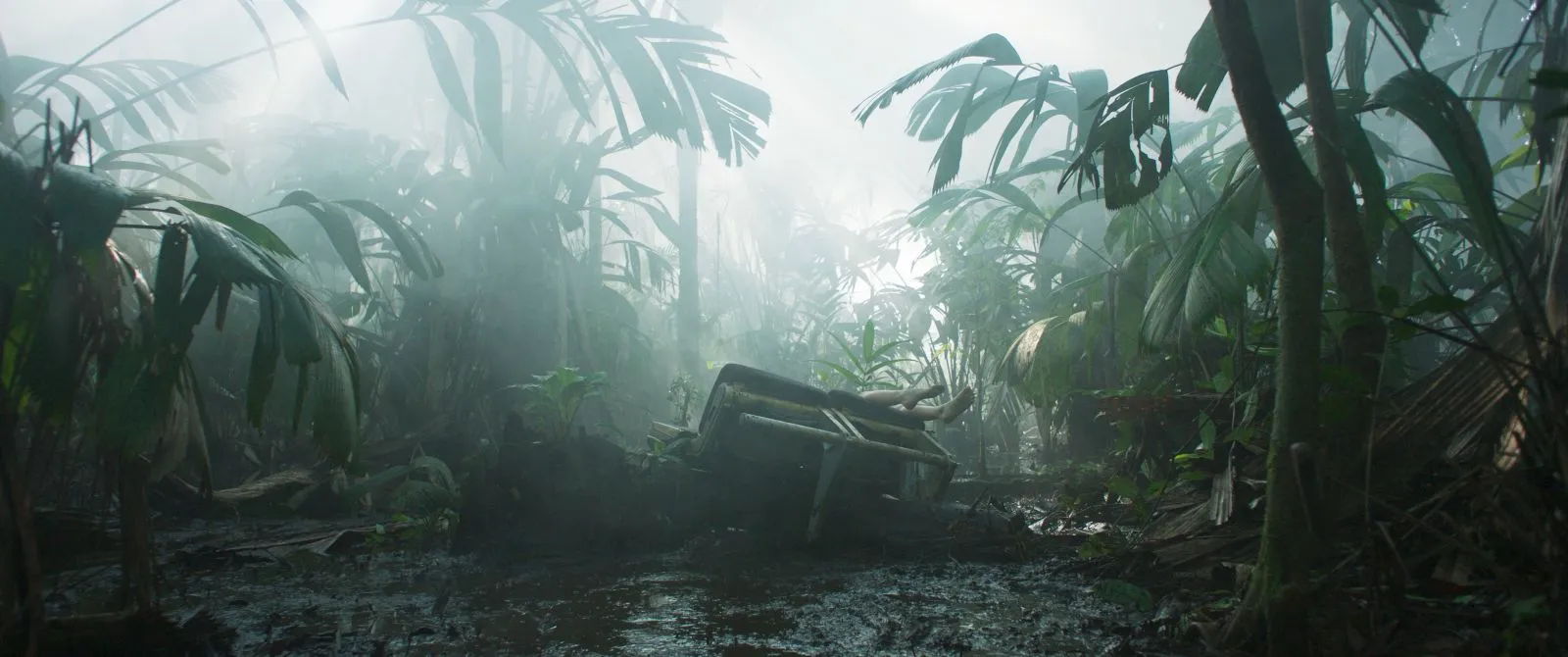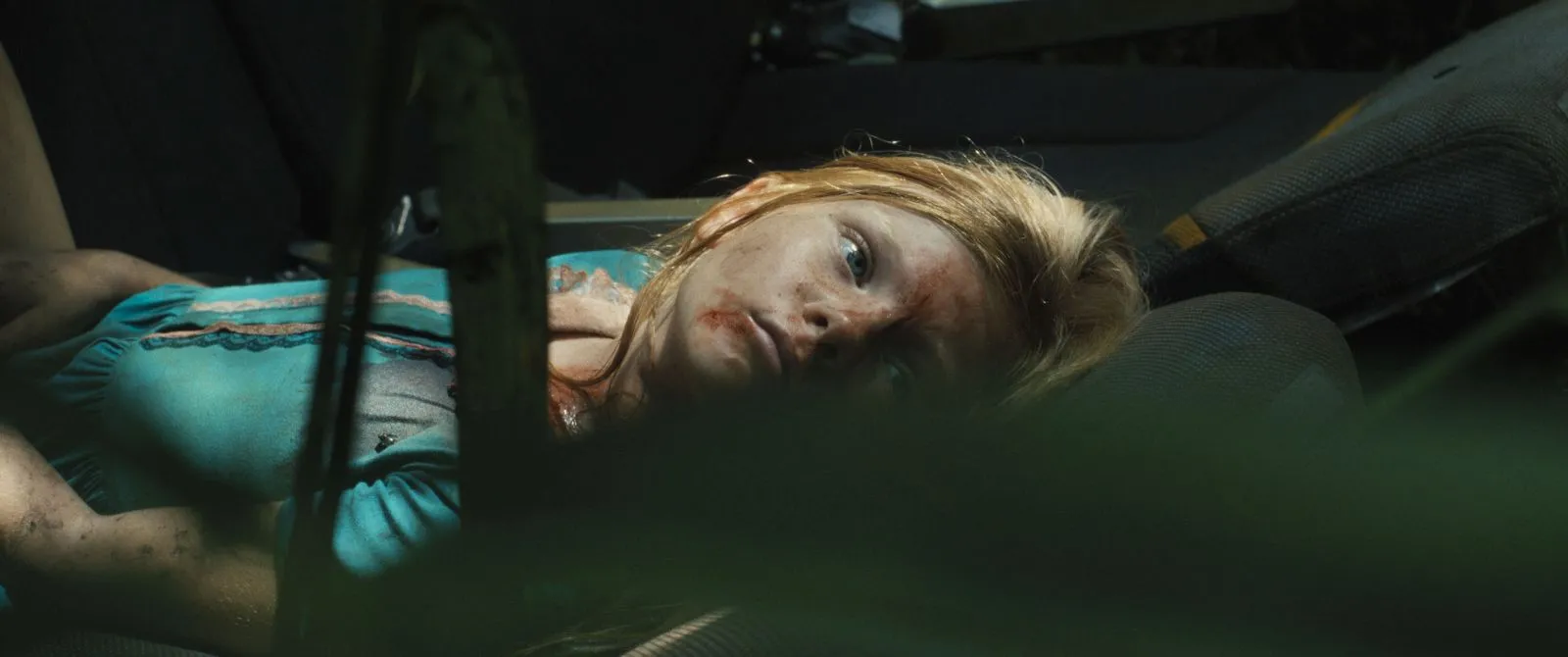Deep in the Brazilian rainforest, an extraordinary story begins. As a young girl falls from the sky, only by miracle does she survive. But what destiny awaits this solitary survivor in the isolated Amazon? Pia Marais’ intriguing drama Transamazonia follows teenager Rebecca Byrne as she comes of age living among the lush jungle that once witnessed her rebirth.
Guided by missionary father Lawrence, Rebecca has emerged as a healer for the local Indigenous community. Yet shadows from her mysterious past still cling, and forces encroaching on the forest threaten to upset the delicate balance between all who call it home.
Marais crafts a mesmerizing tapestry exploring profound questions of spirituality, belonging, and humanity’s relationship with the natural world. Beautifully photographed by Mathieu de Montgrand, the lush Amazon setting becomes as much a character as any person. Meanwhile, Helena Zengel offers a captivating turn as the enigmatic Rebecca, reticent yet radiant amid an inner journey toward self-discovery.
Though narrative momentum flags at times under the film’s sprawling ambitions, Marais’ thoughtful lens affords many intriguing perspectives in her contemplation of colonial legacies. Ultimately, she leaves audiences with more questions than answers—as is often the way with life’s deepest mysteries. With its profound themes and arresting atmosphere, Transamazonia transports viewers to a place both foreign and familiar, where the heart of what it means to have faith may lie.
Weaving a Complex Tapestry
Pia Marais intertwines many threads within Transamazonia’s narrative, exploring layered themes through a diverse cast of characters living amid the Amazon jungle. At the center is Rebecca, who survives a tragic plane crash as a child and grows up guided by missionary father Lawrence.
He presents the gifted but troubled teen as a healer, though whether her abilities are real remains uncertain. Rebecca bonds with local indigenous youth but has many unanswered questions about her past.
As rebellion stirs against loggers destroying tribal lands, tensions escalate. Sawmill owner Alves hopes Rebecca can wake his comatose wife, agreeing to withdraw if she succeeds. But nurse Denise brings new information challenging Rebecca’s understanding of her family. Her relationship with Lawrence is tested, and she finds herself caught in the conflict, identity shifting as old assumptions fall away.
Lawrence believes his new mission offers purpose after tragedy, though his flashy sermons appear exploitative. His own history and that shared with Rebecca remain shrouded. Is he truly acting selflessly to aid locals, or more self-serving? Alves represents aggression against nature for profit. But others see nuance; logging was originally welcomed before greed encouraged illegality.
Meanwhile, Denise, a lone female voice, pushes others to scrutinize motivations and address injustice. Her role feels underdeveloped alongside more vague indigenous characters. Some threads, like an early rescuer character, abandon narrative logic.
Marais weaves profound musings on spirituality, belonging, and environmental ethics through well-crafted scenes. Yet ambition sometimes exceeds execution. Plot points pile up heavily towards the end. More focus on internal journeys may have balanced thoughtful kernels within a denser storytelling broth. Ultimately, Transamazonia invites contemplation more than tidy resolution.
Enveloping the Audience in the Amazon’s Embrace
One cannot discuss Transamazonia without acknowledging the vital role of its breathtaking sights and sounds. Under Mathieu de Montgrand’s masterful lens, the lush Amazon wilderness practically takes on a character of its own, a wild realm where all within must learn to adapt or fall by the wayside. His sweeping visuals place the audience right amongst the towering trees and swarming insect life, while never distracting from Marais’ delicate human drama unfolding amid the foliage.
Captured through de Montgrand’s keen eye are nuanced interplays between the natural world and the souls navigating it. Whether lingering over the depths reflected in Rebecca’s eyes or sweeping over tribal lands facing invasion, he imbues each frame with cultural and environmental commentary. At the same time, Marais ensures her characters remain the movie’s beating heart through rhythmic editing and closeups revealing internal turmoil words cannot.
Together, director and cinematographer spin an all-enveloping tapestry where one is never certain what lies beneath dense rainforest majesty or beyond the enigmatic faces of inhabitants. Their magic stems not from artifice but raw simplicity, letting the Amazon’s untamed splendor speak for itself. While this impressionistic focus means plot points feel secondary at times, it firmly grounds the audience in questions with which Rebecca herself must now grapple. By the film’s end, we’ve truly journeyed alongside her through challenges both inward and outward looking, in a world we’ll carry with us far past the final frame.
Contending with Complex Colonial Legacies
Pia Marais took on no small task in grappling with post-colonial tensions, spiritual conflict, and environmental destruction through Transamazonia. And while her handling was far from perfect, the film raises thought-provoking issues that deserve unpacking.
The film gives the most weight to indigenous rights and land protection against exploitative logging. Scenes of tribes blocking industry capture a real-world battle viscerally. But the characters involved remain somewhat one-dimensional, and we learn little of their cultures or lives beyond the main conflict. A clearer perspective on their culture and relationship to the natural world could have strengthened this theme.
Questions around faith, spirituality, and their intersection with politics are also prominently featured but even more nuanced. Rebecca’s gifts may heal, but her father’s showmanship blurs the line between gift and grift. He strives to aid locals, yet paternalism lingers. Alves sees profit where others see sacred land. Through it all, the film maintains an admirably ambiguous stance.
Where Transamazonia faces the toughest scrutiny involves colonial legacies. While sensitively avoiding stereotypes, Rebecca and Lawrence’s roles risk perpetuating a “white savior” complex the film aims to deconstruct. Fleshing their backstory out more could have complicated easy assumptions around race, belonging, and healing complex multicultural dynamics.
Ultimately, Marais grapples with weighty themes more than she resolves them. But sparking discourse on their intricacies is a worthy goal, even if all questions went unanswered. By peering behind forces that impact the Amazon’s inhabitants, she shines needed light on realities too often obscured.
Bringing Heart to Ambiguous Souls
At the core of Transamazonia’s success rest the talents of its lead performers. As the film’s enigmatic heart, young Helena Zengel imbues Rebecca with a silent complexity that resonates long after closing credits. Gracing the role with equal parts sensitivity and guarded strength, she ensures the traumatized teen’s journey toward clarity remains the movie’s emotional anchor.
Comparatively, Jeremy Xido struggled to vivify Lawrence beyond surface-level earnestness. The missionary father remained an enigma, his personal stakes in the Amazon’s peoples left frustratingly opaque. A bit more vulnerability could have elevated the character from mere devoted do-gooder to a fully formed soul seeking solace from his own shadows.
Similarly, Rômulo Braga brought an almost cartoonish zeal to antagonist Alves, robbing the logger of nuance in a story raising intricate questions about profit versus protection. A shaded take hinting at both his own humanity and the systemic forces that forged him could have deepened understanding on all sides.
Supporting turns varied too in their success balancing emotion and information. Sabine Timoteo lit up scenes she graced with nurse Denise’s fierce compassion and wit. But indigenous characters felt predominantly reactive, denied inner lives that could have strengthened Transamazonia’s cultural commentary.
Overall, Zengel alone seemed empowered to expose her character’s rawest emotions and doubts. Had Marais challenged others to match her fearlessness in peeling back façades, the movie may have approached its profound themes with even greater soulful insight through its beautifully flawed onscreen family.
When Nature and Craft Collide
From its first glimpse of an infant’s curious hand amid ants, Transamazonia immerses the senses in its Southeast Asian setting. Alongside cinematographer Mathieu de Montgrand, the film achieves verité that transports us deep into remote green expanses. You can almost feel humidity beading skin as the sun filters between towering leaves.
The lush natural soundscape envelops every moment too. From insects’ songs to rushing waters, the ebbs and flows of jungle noises feel organic companions rather than intrusions. The original score echoes nature’s refrains without distraction. Together, the audiovisuals craft an intoxicating rhythm of life pulsating all around story unfoldings.
Yet where craftsmanship truly served the movie remains debatable. Brilliant as de Montgrand’s framings appear, they sometimes risk prioritizing atmosphere over advancing comprehension. With an abundance of dreamlike vignettes, plot points feel scattered, leaving key character motivations hazy.
Similarly, the script neglects opportunities presented by its setting. That an internet-savvy Rebecca never explores her mysterious past defies suspension of disbelief. While maintaining ambiguity fits theme, too many ambiguities drown deeper understanding we seek of these intriguing souls.
With a film, this poetic, airtight logic isn’t necessary. But where technical aspects undermine emotional investment in characters and their dilemmas, the storytelling loses power. In aiming to stir thoughts, not always answers, Transamazonia risks leaving some audience members adrift in its artistic ambitions. A stricter editing hand and more psychological realism could have balanced beauty with substance.
Braving the Unknown in Transamazonia’s Forests
Pia Marais takes her audience on a bold, sprawling journey through Transamazonia. With intimacy and imagination, she places us amid a primeval realm where nature and humanity collide in complex ways. At its best, Helena Zengel’s compelling Rebecca and de Montgrand’s lush cinematography immerse us in the trials of characters negotiating faith, heritage, and self-discovery amid escalating change.
Yet while raising profound issues, Marais sometimes loses her way in narrative forests as dense as the Amazon herself. Too many ambiguous threads and not enough focus on inward transformation clouds full appreciation of crafted themes. A tighter edit prioritizing character psychology could have balanced atmosphere with emotional resonance.
Still, Transamazonia is far from a failure. It sparks introspection on colonial legacies, ecological importance, and humanity’s role in both. Helena alone makes watching worthwhile for her stunning ability to lay a troubled soul bare. Marais swings for the fences, tackling sprawling subjects, and even amid misses, her thought-provoking eye remains one to watch, guiding other young souls.
Ultimately, this film, like the rainforest it depicts, contains mysteries worth braving despite unknowns that may come. Those journeying in with patience for ambiguity may find in its soulful complexities quiet rewards that linger long after credits roll.
The Review
Transamazonia
Pia Marais takes on ambitious themes but occasionally bites off more than her narrative can chew. Still, Transamazonia offers profound food for thought for those willing to get lost in its poetic ambiguities. Helena Zengel anchors the film with a standout performance that alone makes the journey worthwhile.
PROS
- Immersive aesthetic achieved through stunning cinematography, production design, and sound design
- Thought-provoking exploration of critical postcolonial, indigenous, and environmental themes
- Helena Zengel gives a career-defining lead performance.
- Succeeds as a meditative character piece at its best moments
CONS
- Narrative is overstuffed and ambiguous at times, weakening emotional investment.
- Character development and backstories could be more fleshed out.
- Pacing lags due to an imbalance between plot and impressionistic style.
- Themes are grappled with more than resolved




















































